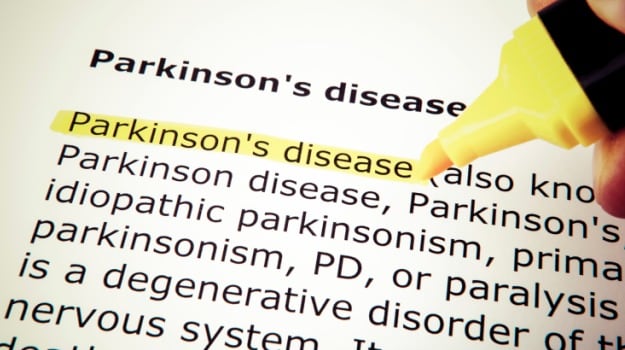The Holy Grail in any progressive disease is to find it early enough to start effective treatment before irreversible damage has occurred. For Parkinson’s disease, which afflicts 1.5 million Americans and growing, a new study has brought this goal a little closer.
The study, conducted among more than 54,000 British men and women, identified symptoms that were more likely to be present in people who years later were diagnosed with Parkinson’s. The findings underscore the prevailing view among neurologists that the damage caused by this disease begins long before classic symptoms like tremors, rigidity and an unsteady gait develop and a definite diagnosis can be made.
The study, by Dr. Anette Schrag and her fellow neurologists at University College London, was published in The Lancet in January. As many as five years before a diagnosis of Parkinson’s, those who developed it were more likely to have experienced tremor, balance problems, constipation, low blood pressure, dizziness, erectile and urinary dysfunction, fatigue, depression and anxiety.
In addition, Dr. Claire Henchcliffe, director of the Parkinson’s Disease and Movement Disorders Institute at Weill Cornell Medical Center, said REM sleep behavior disorder, characterized by a tendency to act out one’s dreams while asleep, was one of the strongest prediagnostic symptoms, along with a lost sense of smell and subtle changes in cognition.
Dr. Melissa J. Nirenberg, a Parkinson’s specialist at NYU Langone Medical Center, said, “Up to 80 percent of people with the sleep disorder get Parkinson’s or a similar neurodegenerative disease.”
Although far more study is needed before it will be possible to say that someone has preclinical Parkinson’s, people with combinations of the risk factors identified in the study might consider consulting a neurologist who specializes in movement disorders, the experts said.
If a neurological exam suggests the likelihood of Parkinson’s, individuals may be eligible to participate in a clinical trial of one or more drugs that may be able to stop or slow progression of the disease by preventing destruction of the brain’s dopamine-producing neurons.
By the time patients develop characteristic symptoms, the brain has already lost more than half of its dopamine-producing cells. The goal is to identify those at risk of Parkinson’s while their brains are still largely intact, and long before a definitive diagnosis is made.
Luella Adan, for example, was a 40-year-old mother and avid tennis player in 2009 when she first noted what she now believes were early signs of Parkinson’s.
“I pulled a calf muscle; then I noticed that I limped when I got tired running for a ball,” recalled Adan, a Brooklyn native who now lives in Chicago. “My balance was still fine, but then I pulled a muscle in the other leg. The limp kept getting worse, and I began to feel off balance. When I closed my eyes, I felt like I would fall backward - I was afraid to take a shower and wash my hair - and I noticed that I couldn’t easily move my left leg.”
Adan said she was getting depressed and having anxiety attacks, and felt so unsteady she hesitated to use the subway. But the first neurologist she consulted could not explain her symptoms.
Finally, in 2012, a second neurologist watched her walk and suggested she get a brain scan to measure dopamine transporter density. It revealed a significant dopamine deficit, consistent with Parkinson’s.
Bill Reed of Brooklyn was 53 when he learned in 2007 he had Parkinson’s. But for three or four years before that, he recalled, he had noticed symptoms like prolonged twitching in his arm and leg muscles, erectile difficulties, a leg that seemed to drag, and an inability to keep up with his wife during their morning walks.
After looking up Parkinson’s online, Reed asked to see a neurologist, who confirmed his suspicions.
Adan and Reed are now being treated, doing regular exercises to keep symptoms at a minimum, and are generally doing well. But both would have preferred to start treatment much sooner, when the damage in their brains was minimal.
Recognizing that the prediagnostic symptoms associated with Parkinson’s are common and quite nonspecific, neurologists are trying to find biomarkers - substances in the blood, saliva or cerebrospinal fluid, or imaging characteristics - that would identify those most likely to develop Parkinson’s, said Dr. Michael S. Okun, medical director of the National Parkinson Foundation.
Hand in hand with this search is an effort to identify disease-modifying agents that could stop or at least slow progression of Parkinson’s in people at high risk. Todd Sherer, chief executive of the Michael J. Fox Foundation, noted that two recent prospects - creatine and coenzyme Q10 - did not hold up in clinical trials. But a few other substances - a vaccine against a protein called alpha-synuclein, a blood pressure drug called isradipine, and inosine, a supplement that raises urate levels - are showing promise in clinical trials.
“Right now we have no treatment to prevent or slow Parkinson’s,” Nirenberg, of NYU Langone Medical Center, said. “But by simultaneously searching for biomarkers, the minute we find something that works, we want to be able to identify everyone who could use it.”
Henchcliffe, of Weill Cornell Medical Center, suggested that people with symptoms predictive of Parkinson’s, as well as the relative few who are genetically at risk, adopt healthful exercise and dietary habits that may forestall the disease.
“All forms of exercise seem to be good - dance, aerobics, stretching, whatever appeals to you,” she said.
“With respect to diet, a Mediterranean-style diet” - rich in fresh fruits and vegetables, whole grains, fish and olive oil - “is most closely associated with a reduced risk of developing Parkinson’s.”
Image Courtesy: Thinkstock
© 2015 New York Times News Service








